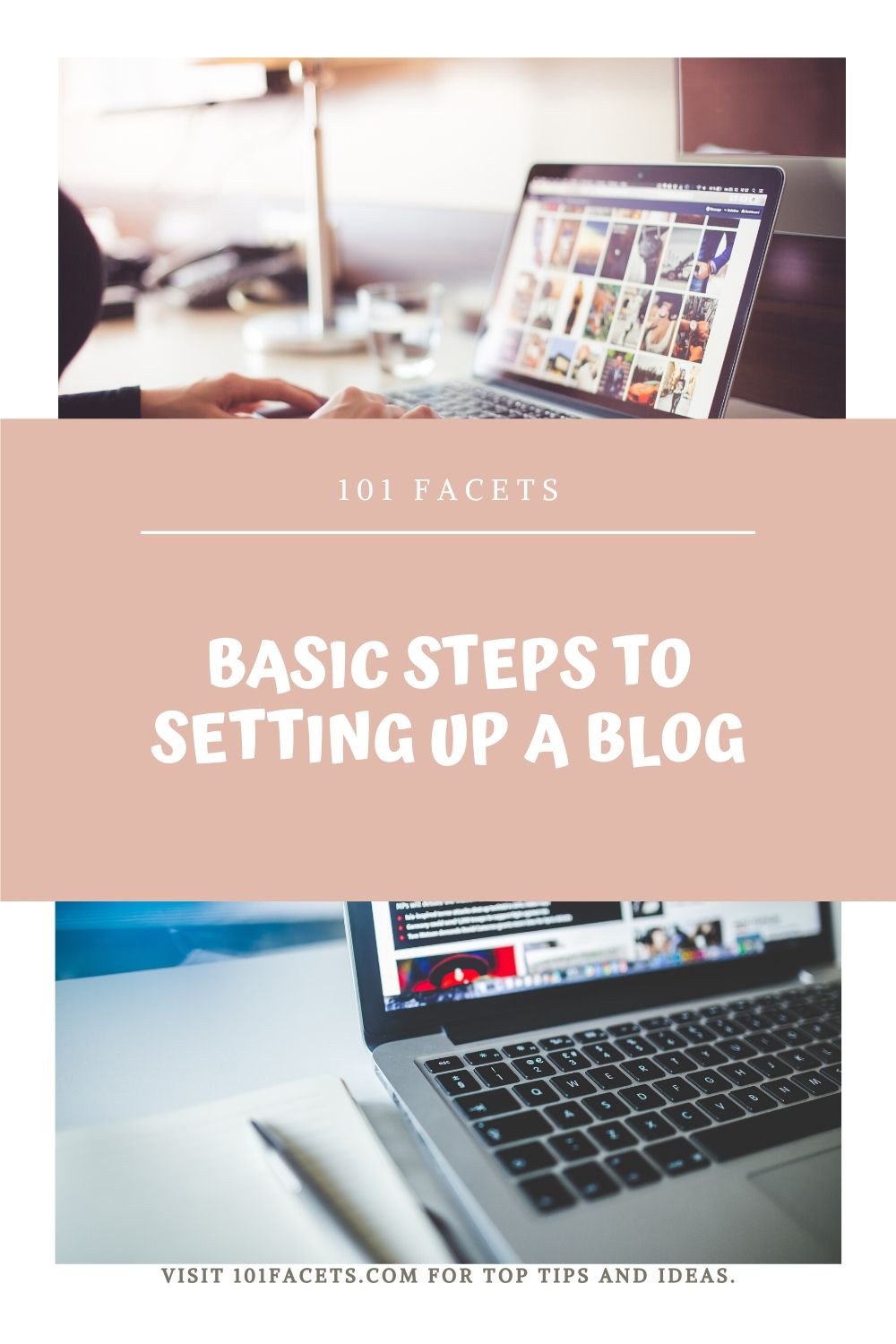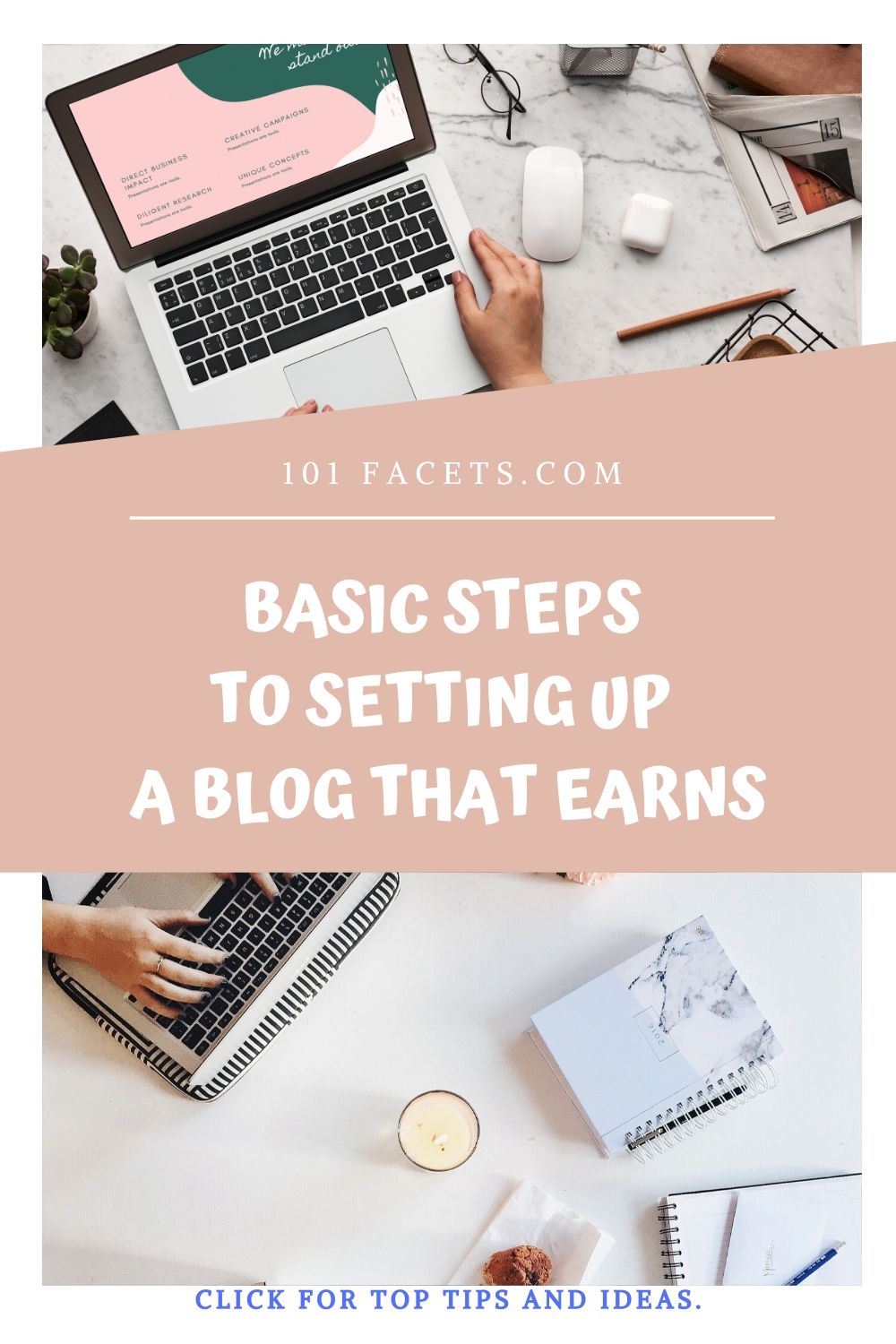
*This post about setting up a blog contains affiliate links, 101facets might earn if you purchase from these links without extra costs for you. Thanks for your support.
Perhaps you’ve seen an advertisement such as above while browsing a friend’s facebook, twitter, or instagram accounts. You get curious and click on that ad but you can’t understand all the jargons, but before you leave – you clicked on an advertisement about your favorite shoe brand shown in the middle of the page. You then leave without really bothering about it and went on to buy the shoes. The moment you clicked that ad and buy something though, you gave the page owner some money as a deal with ad platforms, and I’m sure he or she is grateful even if she wouldn’t know it’s you.
It’s true, you can make money with your blog but it takes time to build it up. It’s not an overnight success for most of us. Although there really are bloggers who make 5-figures, even 6, soon enough.
I started blogging in 2008 and 101Facets is one of the 15 niches I kept. This is my quest from being a SAHM to becoming a WAHM (at least for a little bit). Read on to pick some points on the basic steps to setting up a blog to be able to monetize it later on even if it’s just worth a few dollars at first.

Table of Contents
Deciding to Blog
Why do Bloggers blog? For many reasons: some blog for fun, others to share their knowledge, some to have an outlet for their passion, and others for the money. Blogging can be a business if you put time and effort to it (business being defined as the organized efforts and activities to produce and sell goods and services for profit).
Whichever the reason you pick, here’s hoping 101Facets can help. Before blogging, you need to know that it takes time. It’s like researching before you write for a regular job. Writing blog articles also need a structure that will make it both entertaining and informative, you don’t want it boring but you wouldn’t want it to lack substance.
Free Versus Hosted Blog Platforms
There are many free blogsites you can start your blog with. To get a feel of it, sign up to blogger.com or wordpress.com and get a look around.
I chose blogger when I was starting as I was introduced here by some cyberfriends whose blog piqued my interest. Blogger is google owned, it is easy to navigate. While the extension is blogspot.com, it is more commonly known as blogger which is the contracted word for weblogger; someone who maintains a blog. Blogger offers domains, so you can host your blog on your own name.com without having to pay for hosting.
You can of course go self-hosted and buy your domain name from available registrars, which will later be your brand. Getting your own domain name has advantages to it.
Getting a Host
It is important to choose a host like you would a bank.
Choosing a web host for your site takes a bit of time and your decision will entail either headache or bliss when it comes to your blog.
A hosting service is where all your blog data will be stored. It is important that it is known for being online 24/7 to ensure that your blog is always accessible. Our host for 101Facets is Wealthy Affiliate, it’s a hosting platform and an affiliate marketing university in one. Their package prices could be steep compared to others but it’s really worth their services.
Start a Blog with Wealthy Affiliate today and learn how to earn money thru their platform!
Here are some of the things you should look for in a host:
– Competent and fast replying support system
One thing I like about WA is that they reply in a matter of minutes (if not seconds) and will help you until you’re satisfied with your inquiry.
– SSL certificate inclusion
An SSL or Secure Sockets Layer is a technology that authorizes the browsers and servers to transmit and receive data in a securely manner via an encrypted connection called HTTPS (Hypertext Transfer Protocol Secure).
– Safe and secure
The biggest headache you will face when blogging are malware attacks, viruses and such injected by malicious people who have nothing better to do.
Cheaper But Competent Options
There are of course hosting services that offer great packages with fees that won’t break the bank.
Namecheap

Picking a Niche
To make it easier to blog, it is best to narrow down to a topic of expertise. You could write about anything under the sun and be an expert about it if you aren’t already are. For example, fashion is such a wide topic, it is the umbrella category for dresses, jackets, shoes, shirts, pants, and many more.
Each of the topics mentioned are also parent categories for many other niches. Dresses could be maxi-dresses, skater dress, tutu dresses, among the 50+ types of dresses according to the cut. Shoes could be volleyball shoes, running shoes, climbing shoes, depending on function. There are endless of niches around, and surely there’s one that not a lot writes about if none at all.
Case in point, if you have a baby and you have been looking for the best stroller around but couldn’t find any, you can make a blog that reviews each and every single stroller around. (Speaking from experience, as I had about 15 strollers when my kids were younger). You can also pick a specialty from all the stroller types to narrow down your niche. Like they say, necessity is the mother of invention – in blogging, experience bores a niche along with expertise!
We wrote about deciding on a niche here, and it means providing solutions to problems or answers to questions. So if you have identified a need waiting for supplication, go for it, be the provider.
Deciding on and Registering Your Domain Name
Once you’ve decided on a niche, it’s time to pick your domain name. For example, if you decide on strollers having experience on using a number of them, you can choose BestStrollers.com or add the area you are in: BestStrollersSeattle.com, StrollersForToddlersSeattle.com – you both have your niche and area which will be your target audience.
Click here to see our tips to consider when picking your domain name. Remember that your domain name will be tied to your blog for a long time and you, and it’s always what your niche, audience, and brand will revolve around.
When you have finalized on your choice of domain name, register it – webhosts usually have domain registration services too costing from 14$ and up, but Namecheap.com stands by its name costing as low as 0.98$ on promo and some starting at $3.98/year.
Setting Up Your Blog
Once you’ve bought your hosting and domain, you can now start with the technical aspects of your blog.
– Install WordPress
Some hosting provide wordpress installation for free. It’s pretty easy and will be finished in a matter of seconds (which wasn’t the case during the earlier blogging years). You can follow the instructions here if your hosting doesn’t provide this service, or if you are brave enough to do things yourself.
– Select a Theme
Having a theme that is SEO-friendly, stylish, and not heavy will prove worth it in the long run, even if its costs a hundred or more dollars.
Personally, 17th Avenue and LovelyConfetti themes are two of the Feminine theme developers I really like. Envato also ha a lot of beautiful themes, that are SEO-friendly and elegant. I’ve purchased a number of themes before but something is always lacking. The one that I have now is just perfect for what I want 101facets to be.
– Install Plugins

Branding
Your blog’s branding is your first impression — how readers recognise you, remember you, and come back.
Define your brand identity: Pick a clear niche (what you help your readers with), your tone of voice (friendly, professional, quirky) and your visual style (colours, fonts, logo). Knowing who you are helps everything else fall into place.
Design a memorable name and domain: Your blog’s name should be easy to spell, reflect your niche, and match your brand personality. A clean domain (ideal: .com or your country-code) reinforces professionalism.
Create a strong visual identity: Choose 2–3 core colours and fonts. Design your logo and blog header/banner so that your blog looks cohesive across posts, social media, and even print. A consistent look builds trust.
Craft your brand story: Share why you started the blog, who you serve and how you help them. This humanises your brand. Readers want to connect with a person, not just content.
Build brand guidelines you’ll follow: Write down (even briefly) your visual style, tone of voice, preferred imagery style, and content “feel”. This helps when you publish regularly or outsource parts of your blog.
Social Media Accounts
Once your brand identity is set, you’ll want to establish your social media presence — because your blog doesn’t exist in isolation.
Choose your key platforms: Select 1-3 social networks where your audience hangs out. For example: Pinterest (great for bloggers/home-lifestyle), Instagram, Facebook Groups. Don’t spread yourself too thin.
Secure consistent handles/usernames: Use your blog brand name (or close variant) across platforms so readers easily find you. Consistency boosts recognisability.
Set up your profiles professionally: Use your brand logo or a clean headshot, cover/banner image matching your blog branding, and a clear bio that states what you do + a link to your blog.
Create content that supports your blog: Your social media isn’t just for posting random stuff — it should amplify your blog posts, invite people to your email list, show behind-the-scenes, and build engagement.
Plan a posting rhythm and engage: Create a simple calendar (e.g., 3 posts/week) with a mix of blog promotions, value posts (tips, mini-lessons), and personal/relatable content. Respond to comments and messages — social proof matters.
Leverage platform-specific strategies: For example, on Pinterest you can create vertical pins linking to blog posts; on Instagram use Stories + link in bio; on Facebook create a small group for your audience to build community.
Finalities in Setting Up A Blog
Before hitting “publish” on your first post, there are a few key finishing touches (the “finalities”) you should complete to ensure your blog is set up for performance and growth.
Install essential plugins/tools: If you’re using WordPress, make sure you have an SEO plugin (e.g., Yoast SEO), caching plugin for speed, and security plugin. These help your blog be discoverable and safe.
Create important pages: Your blog should have About, Contact, Privacy Policy/Disclaimer, and a Terms page (especially if you’ll monetise). This builds trust and helps you comply with regulations.
Set up analytics and tracking: Connect your blog to a tool like Google Analytics so you can track traffic sources, user behaviour and what content resonates. If you skip this, you’ll lack data to improve.
Ensure mobile/responsive design & fast loading: Many readers view blogs on mobile. Make sure your theme is responsive, images are optimised and load-time is acceptable. A good user experience keeps visitors coming back.
Create your initial content bank: Before you launch publicly, prepare at least 3-5 high-quality posts (so readers don’t land on an empty blog) and an editorial calendar. This gives you breathing room and consistency.
Plan your monetisation strategy (even if you launch later): Decide early how you’ll make money (affiliate links, services, ads, digital products). When you launch with this mindset, you can tailor your content accordingly.
Blog Launch
Finally, you’re ready to go live — but a launch done well maximises visibility and gives you momentum.
-
Pick your “Go Live” date and build anticipation: Use your social profiles and email list (if you’ve built one) to announce when your blog will launch. Maybe share a “coming soon” post or graphic.
-
Publish your initial posts and ensure navigation is clear: Make sure your homepage, menu, categories and links are all set so first-time visitors can easily find your mission, top posts and subscribe options.
-
Send launch email + post on social: Announce your blog to your network, invite them to read/share/comment. The initial traffic signals to search engines something is happening.
-
Engage early visitors and ask for feedback: Encourage comments, shares, or questions. Reply promptly. Early engagement helps social proof and builds community.
-
Monitor performance and iterate: Check your analytics after launch. Which posts got the most traffic? Which referral source worked best? Use this data to refine upcoming content.
-
Leverage launch momentum: Create a special launch offer (freebie, checklist, discount) or a blog-post series. This gives readers a reason to come back and subscribe.
|
|
|








Leave a Reply